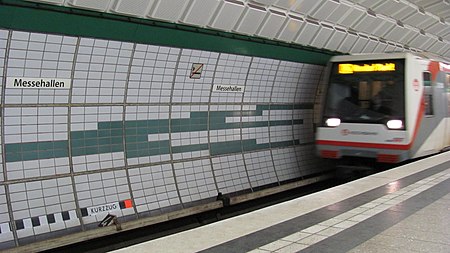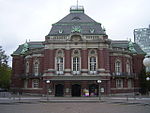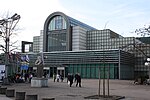Messehallen station
1970 establishments in West GermanyBuildings and structures in Hamburg-MitteGerman rapid transit stubsHamburg U-Bahn stationsHamburg stubs ... and 1 more
Railway stations in Germany opened in 1970

Messehallen is a metro station located at Messe and Congress Center Hamburg on the border of the two Hamburg districts St. Pauli and Neustadt. The station was opened in 1970, and is served by Hamburg U-Bahn line U2.
Excerpt from the Wikipedia article Messehallen station (License: CC BY-SA 3.0, Authors, Images).Messehallen station
Tschaikowskyplatz, Hamburg St. Pauli
Geographical coordinates (GPS) Address Nearby Places Show on map
Geographical coordinates (GPS)
| Latitude | Longitude |
|---|---|
| N 53.557777777778 ° | E 9.9766666666667 ° |
Address
Messehallen
Tschaikowskyplatz
20355 Hamburg, St. Pauli
Germany
Open on Google Maps






